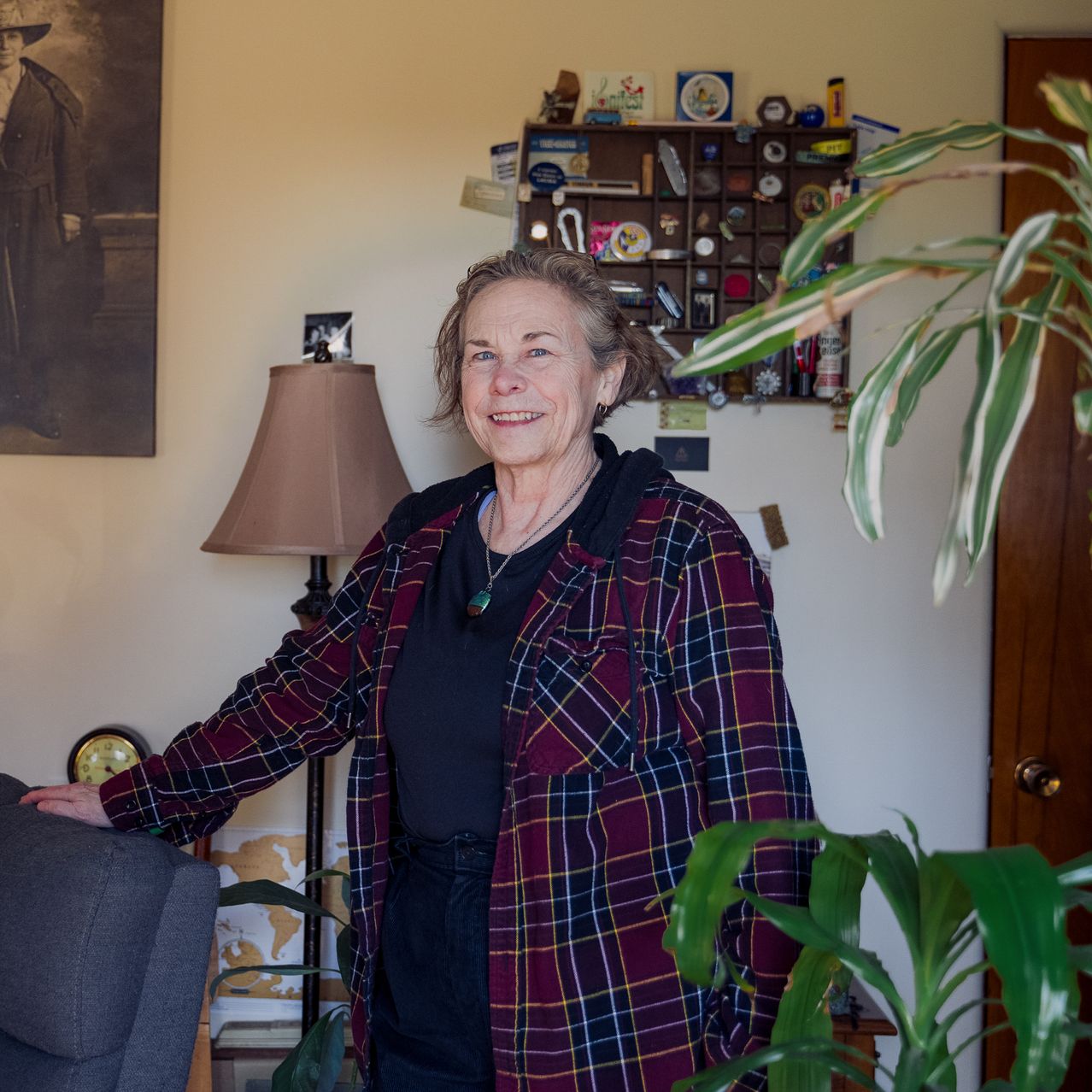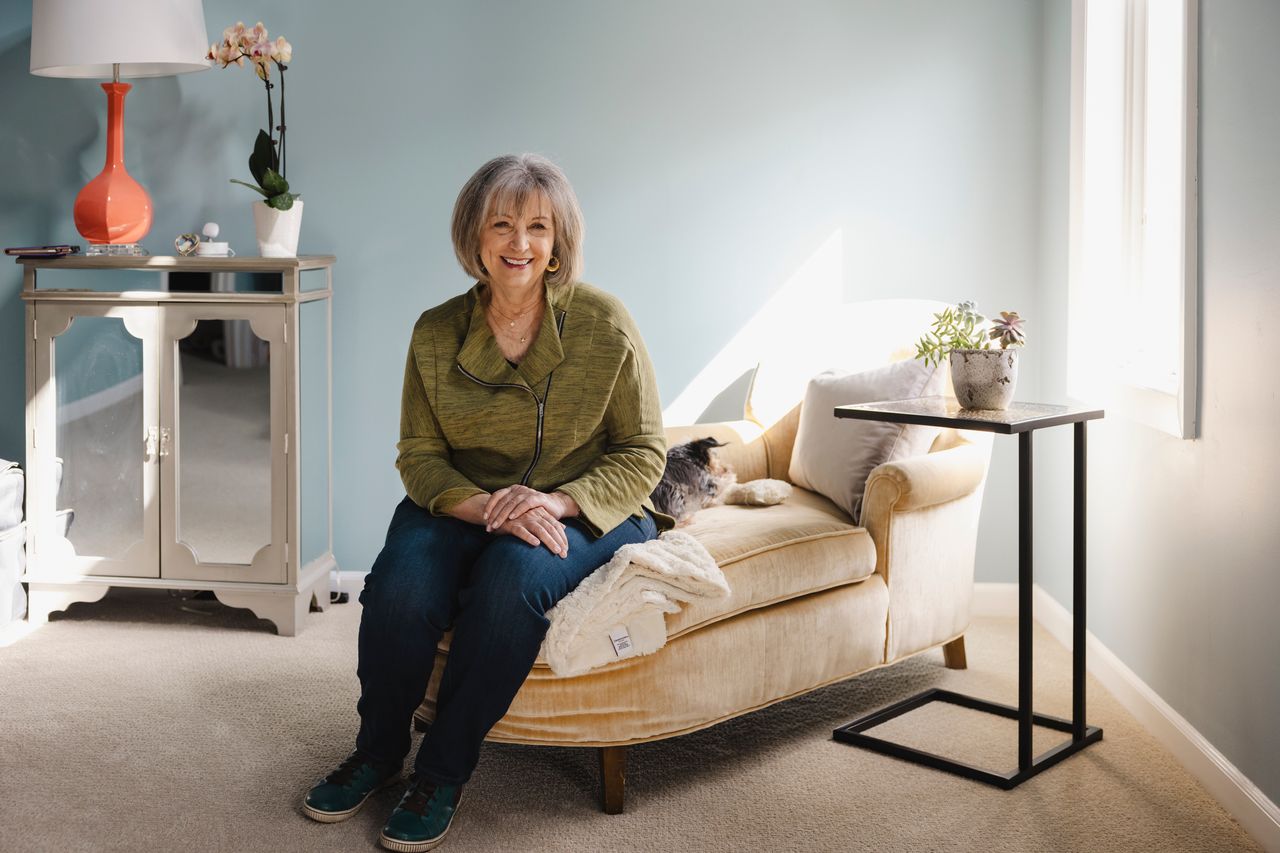Here’s What Retirement Looks Like for Single Women in America
Four retirees open up about their finances and how they spend their time
The risk of running out of money in retirement rises for those with lower pay, longer lives or no partner.
Millions of single women wrestle with all three.
Women earn less than men on average during their working years and are more than twice as likely as men to leave the workforce for more than one year to care for children or ageing parents , according to a survey of 5,261 Americans that Goldman Sachs plans to release Monday.
This shortfall compounds in retirement. Social Security checks are 20% smaller for women who first claim at 62 to 64 years of age, compared with men the same age.
Single women, in particular, have smaller 401(k) and IRA nest eggs . On average, single women between 55 and 64 have about $88,600 in retirement savings, compared with $136,685 for single men and $423,800 for married couples in the same age group, according to Boston College’s Center for Retirement Research.
Women also tend to live longer , raising the projected total cost of retirement as they have to stretch their smaller savings over more years.
Despite these financial obstacles, single women find ways to pursue new ambitions in retirement, including launching businesses and traveling the world. They could have more time if their caregiving responsibilities have ended. With more freedom than many of their married counterparts, some women can make big changes without needing to compromise or negotiate.
We spoke in depth with four single women who have retired. Some have sizeable nest eggs, while others rely on Social Security benefits or earnings from part-time gigs. Each has found fulfilling ways to define retirement for herself.
Deb Hallisey saved diligently during her career as a consultant, and sought help from a financial adviser.
As a single woman, the Lawrenceville, N.J., resident said, “I knew it was going to be on me to provide for myself.”
All that planning was thrown off track after her father died in 2015. She had to put her work with clients on hold to help her mother—who was blind—find live-in help. When her billable hours dropped that year, she lost her job.
Hallisey, 66, sent résumés to consulting contacts, but she was tired of traveling and craved a new challenge.
She found it in becoming a caregiver for her mother, who died in 2022. In addition to handling her mother’s finances and medical appointments, Hallisey spent half of her weekends at her mother’s house to give her mom’s paid caregiver time off.
Angry and resentful, Hallisey quickly realised something had to change.
“When I was angry, my attitude gave Mom an attitude, and we’d start the weekend off wrong. There is a moment when you say, ‘I can’t keep doing that,’ ” she said.
Her mother urged her to write about her caregiving experiences, something Hallisey threw herself into in 2016, after meeting a successful blogger.
She soon launched a website, Advocate for Mom and Dad, and has written two books about caregiving. She speaks frequently on the topic and does consulting for families.
Hallisey saved $600,000 for retirement and built a $50,000 emergency account she used after the layoff. She currently takes $2,500 a month from her retirement savings and earns $500 a month from her business.
Thanks to the strong stock market, her balance is $525,000. Her home is valued at about $500,000 and she has paid off her mortgage.
In June, Hallisey plans to claim Social Security and use her $3,400 monthly benefit for living expenses. Her goal is to leave her IRA for emergencies, including future caregiving expenses.
She recently hired a financial professional to serve as her power of attorney if she becomes unable to manage her finances. After having done that for her mother, she said, “I could not in good conscience ask a friend to do that for me.”
She spends about $2,200 a month, including $260 for home and car insurance and $250 for food. She sets aside $750 a month for property taxes.
She never expected to tap in to retirement savings early, but has no regrets.
“I’m not making enough to support myself,” said Hallisey, who plans to write another book. “But I love it.”
Marianne Simpson retired slowly.
She chose to wind down her financial advisory business over three years, using the transition to test drive retirement while continuing to build up her nest egg. All this still didn’t fully prepare her, she said, for the moment she put her longtime home up for sale and closed the deal on her new life.
She left the Cleveland area and her 25-year career behind and bought a new place in Chicago close to her daughter, son-in-law and two young grandchildren.
With $2 million in retirement savings and a $3,800 monthly Social Security check, she’s in much better shape than most retirees. She also knows better than most how one’s health and lifespan can largely dictate how long money lasts.
“My daughter tells me to spend more on myself, but my mother lived to 101 so I want to make sure I don’t run out of money,” Simpson said.
As a single adult, she said it is critical that she can manage any future healthcare challenges independently and not have to rely on friends or family.
She now spends about $11,000 a month, around half of which goes to setting aside reserves for large expenses such as taxes and insurance. Her big yearly expenses are about $10,000 for insurance including her long-term care and personal umbrella policies, $10,000 to charity and $15,000 in property taxes. Simpson spends roughly $12,000 a year on travel, including her recent two-week trip to Spain.
She volunteers in her church’s shelter for Venezuelan migrants, cooking dinners and doing laundry. She also volunteers several times a month at a local secondhand store where all of the receipts go to local charities.
“The volunteer work helps give me a new sense of purpose,” she said.
Simpson has met new friends, though socialising as a single woman isn’t always easy, she said.
“Much of the world still moves in couples,” she said.
Stephanie Perry retired at age 41.
Perry was inspired by the FIRE movement, which stands for Financial Independence, Retire Early. Those in it save aggressively and pare spending so they can leave work decades ahead of schedule.
“Retirement is the freedom to be anywhere in the world at any time,” she said.
When she told her parents she was quitting her pharmacy tech job to live the rest of her life traveling the world, they worried about her mental health. Eight years later, her parents see how happy she is and have come around to the idea, she said.
Perry does work, but no more than 10 to 20 hours a week on average. She earns money through house sitting, a YouTube channel, virtual coaching and co-hosting events for Black women. She only takes on projects she likes.
Early retirees often call this part-time approach “barista FIRE.”
Since her early retirement, she has saved more than $100,000 in a Vanguard IRA. She has no debt and all her various side hustles add up to a six-figure income, she said. Perry has traveled to more than 30 countries, including Australia, South Africa and Cambodia.
Now 49, Perry never pictured this life when she was in her 20s and 30s.
Perry said she was miserable working the overnight shift at the pharmacy. She revenge-shopped and ran up debt to temporarily soothe her spirit. The bank foreclosed on her house.
She began following YouTubers who were enjoying early retirement and an itinerant lifestyle. She wanted to retire, too.
She spends about $2,500 a month, on average, including travel medical insurance, her cellphone and food. She lives out of two suitcases and stores the rest of her belongings at her parents’ home in Delaware, where she visits three or four times a year.
Perry checks in with family and friends in the U.S. regularly through video calls. She goes on the occasional date, but has no plans to get married.
Perry never wants to own a home again and has no plans to live full time in the U.S. She’s working on a book for Black women about how they can leave their 9-to-5 jobs. She would like to settle down in Mexico or Costa Rica one day but hasn’t immediately made preparations for retiring from working entirely.
“I’m never going back to my old life,” she said.

Lori Renee Fye , 65, joined the U.S. Air Force after high school, serving in a mobile radar unit in Germany and at bases across the U.S.
She continued traveling after the military, working in administrative jobs for a conservative pundit in Washington, D.C., an apple baron in Texas, and the chairman of a Native American tribe in California. After her divorce in 2014, she sought refuge in European travel.
After her younger brother’s divorce in 2018, she returned to the Canton, Ohio, area where she grew up. She came to provide emotional support and never left.
“This is the place that made me, gave me my work ethic and basic values,” said Fye. “There is a thing called a sense of place. I’ve realised I’m back in my place.”
Canton is more diverse than she remembered. No one is shocked anymore at the sight of a woman riding a motorcycle, as Fye used to do, she said.
This fall, Fye began volunteering about 30 hours a week at a newly opened LGBTQ+ community centre, Queer in Canton. She gives tours and helps organise the cafe and a clothing donation closet.
Though she says she’s an introvert, Fye enjoys meeting new people, even a group of teens that gathers weekly at Queer in Canton.
“Young kids usually get on my nerves,” she said. But “seeing them hang out together is one of the greatest joys I get from the place. It gives them a place to go and be with other kids who are different and not be bullied.”
Fye, who earned about $70,000 at the peak of her career, lives on her Social Security check of $1,665, plus the $100 her former spouse sends her each month.
She wishes she had worked a little longer to boost her Social Security benefit.
She pays monthly rent of $500 to her brother, who owns the two-family home they share, bordering a woodsy area with a creek.
“I feel very secure here. He pays for the water and Wi-Fi. I pay for the trash collection and the bulk of the mortgage,” she said. “It’s nice to be with someone I can trust to be there for me. Everybody needs one person. My brother is my person in a lot of respects.”
 Copyright 2020, Dow Jones & Company, Inc. All Rights Reserved Worldwide. LEARN MORE
Copyright 2020, Dow Jones & Company, Inc. All Rights Reserved Worldwide. LEARN MORE
This stylish family home combines a classic palette and finishes with a flexible floorplan
Just 55 minutes from Sydney, make this your creative getaway located in the majestic Hawkesbury region.
Continued stagflation and cost of living pressures are causing couples to think twice about starting a family, new data has revealed, with long term impacts expected
Australia is in the midst of a ‘baby recession’ with preliminary estimates showing the number of births in 2023 fell by more than four percent to the lowest level since 2006, according to KPMG. The consultancy firm says this reflects the impact of cost-of-living pressures on the feasibility of younger Australians starting a family.
KPMG estimates that 289,100 babies were born in 2023. This compares to 300,684 babies in 2022 and 309,996 in 2021, according to the Australian Bureau of Statistics (ABS). KPMG urban economist Terry Rawnsley said weak economic growth often leads to a reduced number of births. In 2023, ABS data shows gross domestic product (GDP) fell to 1.5 percent. Despite the population growing by 2.5 percent in 2023, GDP on a per capita basis went into negative territory, down one percent over the 12 months.
“Birth rates provide insight into long-term population growth as well as the current confidence of Australian families,” said Mr Rawnsley. “We haven’t seen such a sharp drop in births in Australia since the period of economic stagflation in the 1970s, which coincided with the initial widespread adoption of the contraceptive pill.”
Mr Rawnsley said many Australian couples delayed starting a family while the pandemic played out in 2020. The number of births fell from 305,832 in 2019 to 294,369 in 2020. Then in 2021, strong employment and vast amounts of stimulus money, along with high household savings due to lockdowns, gave couples better financial means to have a baby. This led to a rebound in births.
However, the re-opening of the global economy in 2022 led to soaring inflation. By the start of 2023, the Australian consumer price index (CPI) had risen to its highest level since 1990 at 7.8 percent per annum. By that stage, the Reserve Bank had already commenced an aggressive rate-hiking strategy to fight inflation and had raised the cash rate every month between May and December 2022.
Five more rate hikes during 2023 put further pressure on couples with mortgages and put the brakes on family formation. “This combination of the pandemic and rapid economic changes explains the spike and subsequent sharp decline in birth rates we have observed over the past four years,” Mr Rawnsley said.
The impact of high costs of living on couples’ decision to have a baby is highlighted in births data for the capital cities. KPMG estimates there were 60,860 births in Sydney in 2023, down 8.6 percent from 2019. There were 56,270 births in Melbourne, down 7.3 percent. In Perth, there were 25,020 births, down 6 percent, while in Brisbane there were 30,250 births, down 4.3 percent. Canberra was the only capital city where there was no fall in the number of births in 2023 compared to 2019.
“CPI growth in Canberra has been slightly subdued compared to that in other major cities, and the economic outlook has remained strong,” Mr Rawnsley said. “This means families have not been hurting as much as those in other capital cities, and in turn, we’ve seen a stabilisation of births in the ACT.”
This stylish family home combines a classic palette and finishes with a flexible floorplan
Just 55 minutes from Sydney, make this your creative getaway located in the majestic Hawkesbury region.






















